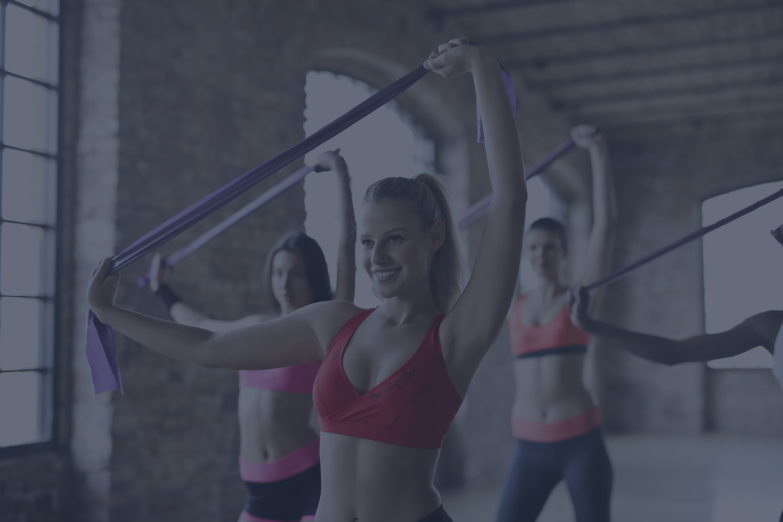
Do you ever find a soreness or stiffness in your hips when running and exercising? How about unexplainable lower back pain? These ailments may be caused by poor internal hip rotation.
Hip internal rotation is the turning of your femur (thigh bone) inward towards your pelvis - so rotating inwards. As you do so, your foot moves away from your body. We do this movement thousands of times a day; both when exercising, and during day-to-day activities. In this article, we will address the importance of, and how to maintain better hip rotation, with some simple exercises to try at home.
What is poor internal hip rotation?
Poor internal hip rotation is when the thigh does not do this properly, due to issues with one or more of the muscles that work together to rotate the hips. It is a relatively common problem; many people don't have strong or flexible enough muscles for the internal hip rotation that they need for particular exercise or tasks, and it's especially important to strengthen this area when undertaking new exercises.
Furthermore, lack of these muscles can lead to mobility issues and health problems down the line, so it's a really great idea to include some internal hip rotation stretches into your daily fitness routine.
When do we rotate our hip?
As mentioned, we rotate our hips thousands of times throughout the day, while exercising or performing lower-intensity tasks. When uninjured, we normally use these muscles subconsciously, so it's surprising to learn how much we rely on them!
Some key times that we use our hip internal rotators are when we are:
- Getting dressed
- Running or jogging
- Weightlifting
- Walking, even for short distances
As you can see, we use our hip rotators frequently, both when exercising and performing day to day activities. It's therefore crucial for someone who works out a lot to think about their hip internal rotation muscles, but equally, anyone should consider building strength in the area to avoid mobility problems in later life.
What muscles do internal rotation of the hip?
Our hip internal rotators comprise of a range of different muscles around the hip area of the body. They include:
- The outer hip muscle, which is called the tensor fasciae latae
- The inner thigh; particular muscles are the adductor longus, brevis, and magnus
- The upper frontal thigh, in particular, the muscle pectineus
- The upper part of the buttocks, comprising of the gluteus medius and the gluteus minimus muscles
These muscles all work together to give good internal hip rotation. They act like cogs in a machine; so if one muscle is damaged, it can significantly affect mobility around the whole area.
Why is hip rotation important?
As mentioned, we rotate our hips during most exercise that uses our lower body, as well as many activities that we often do without properly thinking about what muscles we are using. If we damage our hip rotators, our ability to perform many of these activities becomes limited.
Furthermore, if we don't rotate properly, our pelvis cannot move as it should. This can have an indirect effect and cause issues like shorter strides, and without proper rotation, our bodies can begin compensating by using other muscles and joints, subsequently putting unnatural pressure on and potentially damaging them.
Improper rotation can also bring about mobility issues. Internal hip rotation pain should never be ignored; it can be an indicator of a potential deeper issue, such as gait problems. Gait is the act of walking and balancing, and it can be impacted by many different parts of the body; one of them being hip muscles.
Practicing proper hip internal rotation is therefore really crucial for balance and general mobility.
What is normal hip internal rotation?
After learning about the importance of internal hip rotation, you may be wondering 'how do I know if mine is normal?'
It's a great idea to learn what normal hip internal rotation is, and how to tell if yours is abnormal, so if any problems arise you will notice and be able to resolve them straight away.
Normal hip rotation is thought to be 40-45 degrees. Of course, not many people have the ability to measure the exact angle that their leg moves, so unless their hip rotation is wildly abnormal, this may be hard to measure. Luckily, there are other indicators that you can use to check your hip rotation.
Normal hip internal rotation should enable the person to move their limbs freely from their hip joint. There should be no stiffness or pain, and mobility should be full and flexible.
Any pain in the upper leg or buttocks area could be due to poor hip internal rotation, as could soreness or stiffness in the back or lower down the leg, as far as the knee - as the muscles here compensate to make up for weak or damaged hip muscles. For example, if your hip rotators aren't working properly, your spine could be rotating more to make up for it. This can cause aggravation and pain to the lower back.
Any pain, soreness, or stiffness in the area should be assessed by a professional sports therapist, who will be able to fully diagnose the problem. However, there are a few safe at-home remedies that can be tried as well.
How do you train your hips to rotate?
If you think that you might have the problems described above, we are here to help. There are some great at-home internal hip rotation exercises that you can try to improve mobility and reduce pain, and that can help you train your hips to rotate properly. Many of these can be done with no equipment, but hip circle bands are useful to really increase muscle strength and prevent future internal hip rotation problems.
Band exercise
You will need our hip circle band for this exercise.
- Lie on the floor, bend your knees, and put a band around your right foot.
- Hold both ends with your left hand.
- Extend your left leg and flex your toes.
- Then, holding onto your right knee with your right hand, pull your leg back until you feel the stretch in your hip.
- Repeat on the other side.
Sitting exercise
- Sit on the ground with your knees bent at 90 degrees.
- Stretch your left arm out behind you and place your palm flat on the ground.
- Put your right hand on your right knee, and flex your right foot up towards the ceiling.
- Move your bent leg downwards, so your thigh and calf are making a right angle and you feel a stretch in your hip.
- Repeat this 20-30 times and then switch to the other side.
Lying down exercise
- Lie flat on the floor with legs straight and feet facing the ceiling.
- Rotate your hip inwards as far is it can go with one leg. (Don't push it; just go as far as feels comfortable.)
- While doing this, push your upper leg to the floor.
- Repeat a few times and switch legs.
Hip Internal Rotation Takeaway
Having an incorrect internal rotation of the hip is a relatively common problem that runners, weightlifters, and other people face. Any kind of lack of mobility, stiffness, or pain in the area can be an indicator of this, and it's important to sort it out before other muscles overcompensate and potentially cause more significant mobility problems further down the line.
Any ongoing or severe pain should be looked at by a qualified sports therapist. However, in mild cases, hip rotation issues can often be relatively easily solved through at-home exercise and stretches.









Leave a comment (all fields required)